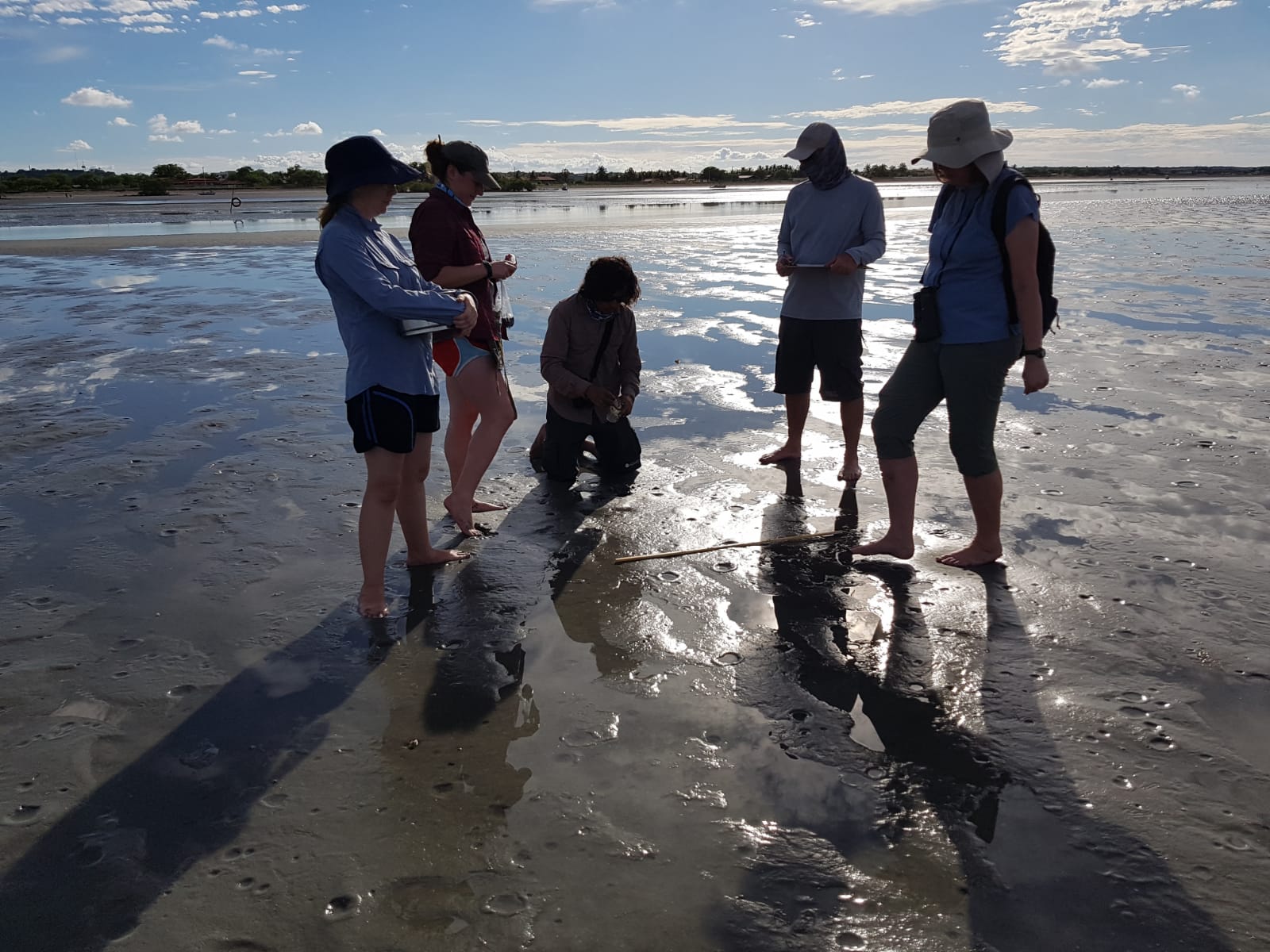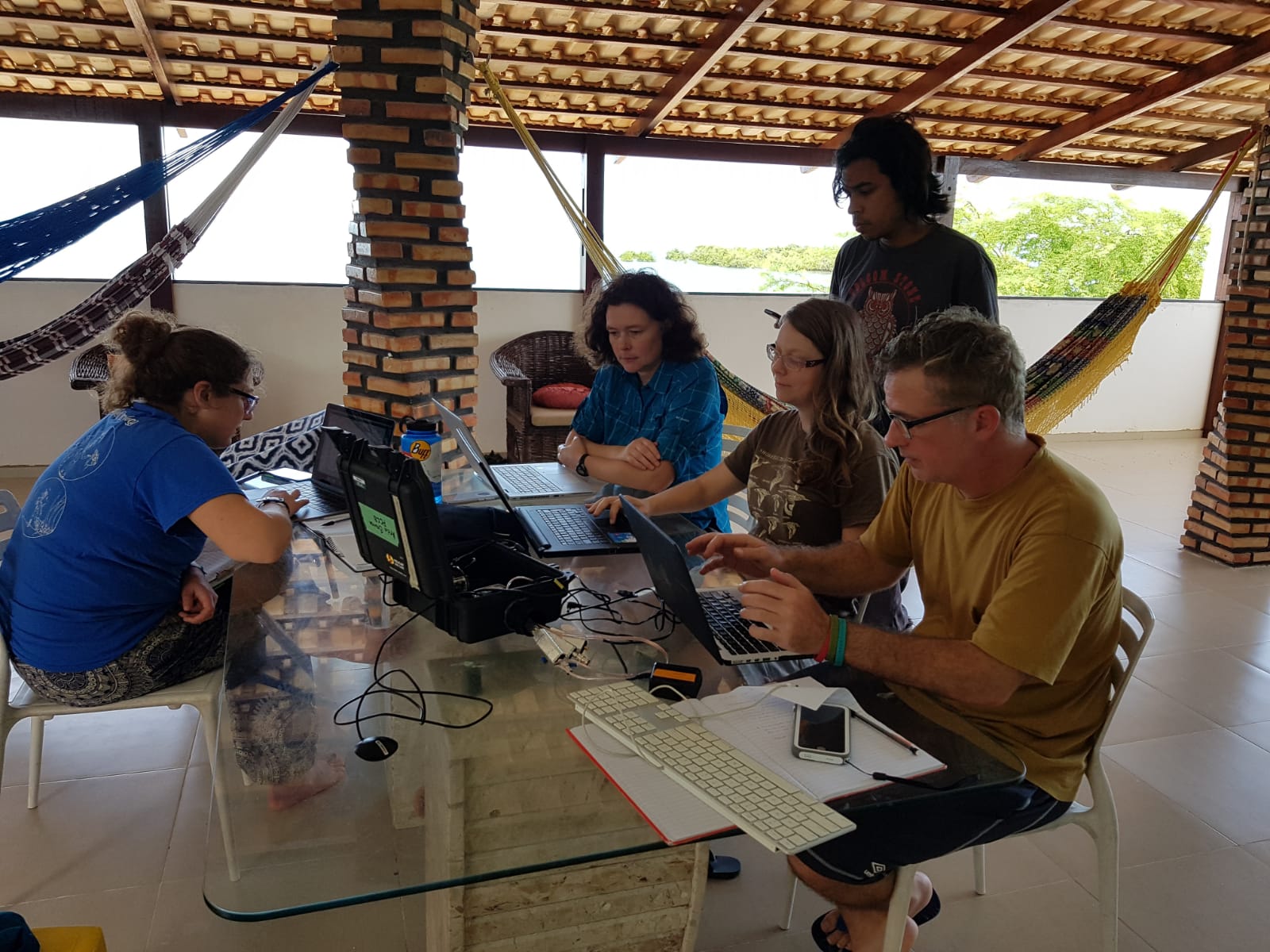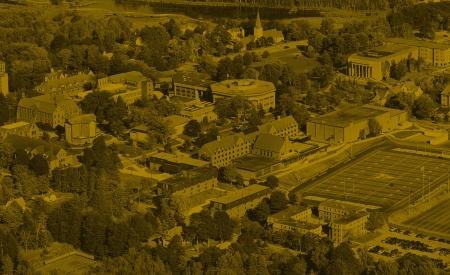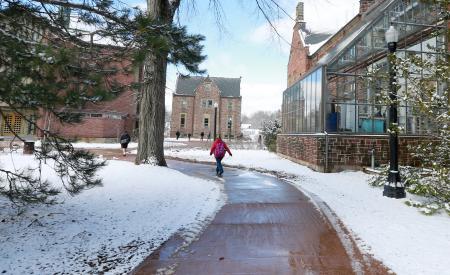Mount Allison researchers collaborate with Brazilian NGO to gain a better understanding of migratory shorebirds’ journeys
 SACKVILLE, NB — A team of researchers in Mount Allison University’s Department of Biology and the Canadian Wildlife Service (CWS) is working with a Brazilian non-governmental organization (NGO) to learn more about migratory shorebirds’ year-round behaviour and migration patterns.
SACKVILLE, NB — A team of researchers in Mount Allison University’s Department of Biology and the Canadian Wildlife Service (CWS) is working with a Brazilian non-governmental organization (NGO) to learn more about migratory shorebirds’ year-round behaviour and migration patterns.
Biology Professor and field ecologist Dr. Diana Hamilton, whose research focuses on migratory shorebirds, most notably the iconic Semipalmated Sandpiper, along with master’s student Rebeca Linhart and Canadian Wildlife Service Shorebird Biologist Julie Paquet, recently spent several weeks in Brazil collecting data on the migratory birds in their winter environment.
“We’ve been studying the birds’ behaviour locally for a number of years, tracking what, where, and how much they eat in the summer, and their migratory patterns and behaviours in the Maritime region, one of their key stopover locations during their southward migration from Arctic breeding grounds to South American wintering areas,” says Hamilton
She says sharing information will benefit researchers in both countries.
 “Having research collaborators in Brazil where the birds spend their winters helps give us a more complete picture of their behaviour, such as eating patterns, and migratory paths year-round.”
“Having research collaborators in Brazil where the birds spend their winters helps give us a more complete picture of their behaviour, such as eating patterns, and migratory paths year-round.”
The Mount Allison/CWS team is working with Aquasis, a NGO in Brazil with a mandate that includes migratory shorebird conservation. Over two months the international research team tagged 45 birds, collecting blood samples for analysis of diet and fattening rate, and set up three Motus Wildlife Tracking towers along the northeastern coast of Brazil. This allows the researchers to monitor local movements of the birds, and determine when they leave the region. Aquasis is now managing these towers and collecting data from them, with some help from the community.
Linhart says the assistance of local community members in the Ceará State of Brazil was an essential component of their research project.
“Along with researchers at Aquasis, we also have individuals from a number of local organizations hosting the tracking towers for us,” says Linhart. “It was great to have these connections onsite to monitor the towers and assist with the data collection.”
![]() Collaborators include a sustainable shrimp farm co-op, a beach-side restaurant, and a manatee rehabilitation centre in Rio Grande do Norte, all of whom are hosting tracking towers in key areas along Brazil’s coast.
Collaborators include a sustainable shrimp farm co-op, a beach-side restaurant, and a manatee rehabilitation centre in Rio Grande do Norte, all of whom are hosting tracking towers in key areas along Brazil’s coast.
Linhart, who completed her undergraduate degree in the U.S., is nearing the end of the first year of her Master’s degree. The collaboration was her first experience doing research abroad. She hopes to present their findings from both the Brazilian and Canadian data collection points at a conference in Panama this coming fall.
Hamilton and Paquet were in Brazil for three weeks, while Linhart spent about two months setting up tracking towers and monitoring the data collected with Aquasis and local partners. The team, along with several other Mount Allison students, will head out into the field to monitor the activities of Semipalmated Sandpipers along the Bay of Fundy and Northumberland Strait throughout the summer, and plans to return to Brazil next spring to collect additional data. The ultimate goal of the Brazil research is to obtain basic biological knowledge that can then be used by Aquasis to develop conservation plans and build community support for their initiatives. This will benefit the birds during their winter stay in the region, and as they prepare for their spring migration back to Canada.
The team’s Brazil work is supported in part by the Natural Sciences and Engineering Research Council of Canada through the Discovery Grants program, Environment and Climate Change Canada, and Mount Allison University, and is being conducted in collaboration with Dr. Jason Mobley and his team from Aquasis.
Photo captions: Field shots from a team of researchers at Mount Allison University and the Canadian Wildlife Service who recently travelled to Brazil to work researchers at Aquasis, an NGO devoted to conservation. Together the international team is working to gain a better understanding of migratory shorebirds’ journeys. Their research includes the Semipalmated Sandpiper, which stops in the Maritime region each year as part of their migration journey. See more photos on Mount Allison’s Facebook page.




